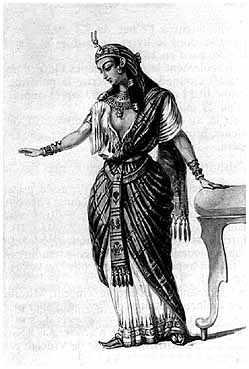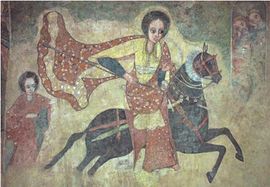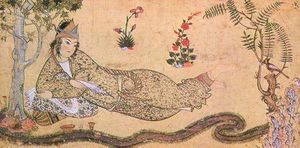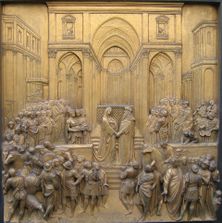بلقيس
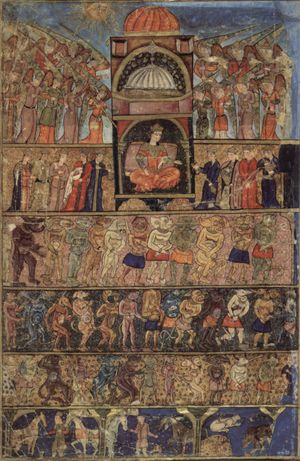
|

بلقيس هى ملكه سبأ ، يقال ان أمها من الجن, أرسل لها النبى سليمان الهدهد برساله يدعوها للتوحيد. وكانت بلقيس وشعبها يعبدون الشمس.
. . . . . . . . . . . . . . . . . . . . . . . . . . . . . . . . . . . . . . . . . . . . . . . . . . . . . . . . . . . . . . . . . . . . . . . . . . . . . . . . . . . . . . . . . . . . . . . . . . . . . . . . . . . . . . . . . . . . . . . . . . . . . . . . . . . . . . . . . . . . . . . . . . . . . . . . . . . . . . . . . . . . . . . .
الرواية التوراتية العبرية
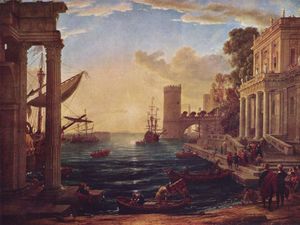
القصص القرآني
 مقالة مفصلة: ملكة سبأ في القصص القرآني
مقالة مفصلة: ملكة سبأ في القصص القرآني
ومملكة سبأ هي مملكة قديمة قامت في الألفية الثانية قبل الميلاد في يعرف الان بالحبشة و اريتيريا و اليمن واستمرت حتى قيام الدولة الحميرية. بدأت المملكة بالازدهار حوالي القرن الثامن ق.م.
اشتهرت سبأ بغناها وقد تاجرت بالعطور والدرر و البخور و اللبان . وقد ذكر انتاجها للعطور في عدة مصادر مثل العهد القديم والإنياذة. وقد ذكرت سبأ في القرآن الكريم ولها سورة بأسمها فيه ، وذلك لكثرة القصص عنها ، وأشهرها قصة بلقيس بسليمان عليه السلام ، وقصة السد العظيم وسيل العرم.
بعد أن أرسل لها النبي سليمان بالهدهد ليدعوها للتوحيد، فكرت في أن أفضل حل هو إرسال هدية لسليمان دون الحاجة لخوض حرب ومواجهة معه، فأرسلت له هدية عظيمة ولكنه رفضها وأصر على إرسال جيش لها وتعجب رسل بلقيس من حجم مملكة سليمان وجنوده من الإنس والجن والحيوانات والطيور المختلفة. قررت بلقيس أن تذهب إلى مملكته حتى تتوصل معه إلى حل سلمي قبل تطور الأمور، وبعد وصولها تفاجأت بأن عرش ملكها عنده. وأعد لها سليمان عليه السلام مفاجأة أخرى وكانت قصرا من البلور فوق الماء وظهر كأنه لجه فلما قال لها ادخلي الصرح حسبت أنها ستخوض اللجة، فكشفت عن ساقيها، فلما تمت المفاجأة كشف لها سليمان عن سرها، قال: (إِنَّهُ صَرْحٌ مُمَرَّدٌ مِنْ قَوَارِيرَ)[النمل:44]. أعلنت الملكة بلقيس إيمانها بالله، وآمن معها العديد من أبناء شعبها.
قَالَ يَا أَيُّهَا المَلؤا أَيُّكُمْ يَأْتِينِي بِعَرْشِهَا قَبْلَ أَنْ يَأْتُونِي مُسْلِمِينَ(38)قَالَ عِفْريتٌ مِنَ الْجِنِّ أَنَا آتِيكَ بِهِ قَبْلَ أَنْ تَقُومَ مِنْ مَقَامِكَ وَإِنِّي عَلَيْهِ لَقَوِيٌّ أَمِينٌ(39)قَالَ الَّذِي عِنْدَهُ عِلْمٌ مِنَ الْكِتَابِ أَنَا آتِيكَ بِهِ قَبْلَ أَنْ يَرْتَدَّ إِلَيْكَ طَرْفُكَ فَلَمَّا رَآهُ مُسْتَقِرًّا عِنْدَهُ قَالَ هَذَا مِنْ فَضْلِ رَبِّي لِيَبْلُوَنِي أَأَشْكُرُ أَمْ أَكْفُرُ وَمَنْ شَكَرَ فَإِنَّمَا يَشْكُرُ لِنَفْسِهِ وَمَنْ كَفَرَ فَإِنَّ رَبِّي غَنِيٌّ كَرِيمٌ(40)قَالَ نَكِّرُوا لَهَا عَرْشَهَا نَنظُرْ أَتَهْتَدِي أَمْ تَكُونُ مِنَ الَّذِينَ لا يَهْتَدُونَ(41)فَلَمَّا جَاءتْ قِيلَ أَهَكَذَا عَرْشُكِ قَالَتْ كَأَنَّهُ هُوَ وَأُوتِينَا الْعِلْمَ مِنْ قَبْلِهَا وَكُنَّا مُسْلِمِينَ(42)وَصَدَّهَا مَا كَانَتْ تَعْبُدُ مِنْ دُونِ اللَّهِ إِنَّهَا كَانَتْ مِنْ قَوْمٍ كَافِرِينَ(43)قِيلَ لَهَا ادْخُلِي الصَّرْحَ فَلَمَّا رَأَتْهُ حَسِبَتْهُ لُجَّةً وَكَشَفَتْ عَنْ سَاقَيْهَا قَالَ إِنَّهُ صَرْحٌ مُمَرَّدٌ مِنْ قَوَارِيرَ قَالَتْ رَبِّ إِنِّي ظَلَمْتُ نَفْسِي وَأَسْلَمْتُ مَعَ سُلَيْمَانَ لِلَّهِ رَبِّ الْعَالَمِينَ(44)}.
— سورة سبأ
الرواية الإثيوپية
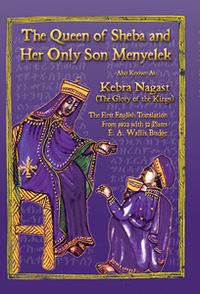
الأصل المصري المحتمل للقصة
There also have been claims by some scholars that the ancient Egyptian name Hatshepsut translates as "Queen of Sheba".[2] Hatshepsut was a pharaoh of Egypt, born c. 1508 and died 1458 B.C., who revived active trade with neighboring kingdoms and created a flourishing and prosperous economy for her eighteenth dynasty kingdom. Solar deities are most closely associated with her dynasty, the one founded by her grandfather and credited to the patron deity of Thebes, Amun. She is recorded as having traveled widely as well.
النوبة - مكان محتمل آخر
The tradition of the Candaces is well documented in Nubia, where the rule of its many queens recedes into prehistoric times there and the Kentakes is a term used to describe the long tradition of leadership in Nubia by warrior queens. Nubia was south of Ancient Egypt, also divided by the Nile River and bordered by the Red Sea and, it another candidate for the location of Sheba and the famous queen. The history of Nubia provides examples of a tradition and a wealthy kingdom that could be the original kingdom of the Queen of Sheba. The economics of the culture was based upon trade. David Jones, in Women Warriors: a History, relates that in 332 BC Alexander the Great attempted to lead his army into Nubia. At its border, he was confronted with the brilliant military formation devised by their warrior queen, Candace of Meroë. She led her army in the opposition from on top of an elephant. Alexander withdrew and redirected his forces to enter Egypt instead.[3] It should be noted that this story is thought by scholars to be legendary, and Alexander appears never to have attacked Nubia. The whole story of Alexander and Candace's encounter appears to be legendary.[4][5] That was the beginning of the Greek rule of Egypt that would last for three hundred years until the Roman occupation in 30 B.C.
Strabo also describes a similar clash with the Romans, in which the Roman army was defeated by Nubian archers under the leadership of another queen of Nubia. This queen was described as "one-eyed", being blind in one eye or represented only in profile.[6] The strategic formations used by this second queen are well documented in Strabo's description of her victory.
تقريبا إمتداد مملكة سبأ (اليمن القديم) يمتد حول مواطن معيشة الرباح المقدس,
...
تفاسير مسيحية
The Queen of Sheba is mentioned as the Queen of the South in the Matthew 12:42 and Luke 11:31 in the New Testament, where Jesus indicates that she and the Ninevites will judge the generation of Jesus' contemporaries who rejected him.
Christian interpretations of the scriptures mentioning the Queen of Sheba in the Hebrew Bible, the Old Testament, typically have emphasized both the historical and metaphorical values in the story. The account of the Queen of Sheba thereby is interpreted as Christian metaphor and analogy: the Queen's visit to Solomon has been compared to the metaphorical marriage of the Church to Christ where Solomon is the anointed one or messiah and Sheba represents a Gentile population submitting to the messiah; the Queen of Sheba's chastity also has been depicted as a foreshadowing of the Virgin Mary; and the three gifts that she brought (gold, spices, and stones) have been seen as analogous to the gifts of the Magi (gold, frankincense, and myrrh). The latter is emphasized as consistent with a passage from Isaiah 60:6; And they from Sheba shall come: they shall bring forth gold and incense; and they shall show forth the praises of the Lord.[7] This last connection is interpreted as relating to the Maji, the learned astronomers of Sheba who saw a new star and set off on a journey to find a new ruler connected to the new star, that led them to Bethlehem.
تصويرات من العصور الوسطى
Art in the Middle Ages depicting the visit of the Queen of Sheba includes the Portal of the Mother of God at the 13th century Amiens Cathedral, which is included as an analogy as part of a larger depiction of the gifts of the Magi.[8] The 12th century cathedrals at Strasbourg, Chartres, Rochester and Canterbury include artistic renditions in such elements as stained glass windows and door jamb decorations.[7]
تصويرات من عصر النهضة
Boccaccio's On Famous Women (لاتينية: De Mulieribus Claris) follows Josephus in calling the Queen of Sheba, Nicaula.
Christine de Pizan's The Book of the City of Ladies continues the convention of calling the Queen of Sheba, Nicaula.
Christopher Marlowe's Doctor Faustus refers to the Queen of Sheba as Saba, when Mephistopheles is trying to persuade Faustus of the wisdom of the women with whom he supposedly shall be presented every morning.[9]
وجهة نظر أكاديمية عربية معاصرة
Some modern Arab academics have placed the Queen of Sheba as a ruler of a trading colony in Northwest Arabia, established by South Arabian kingdoms [بحاجة لمصدر]. Modern archaeological finds do confirm the fact that such colonies existed with South Arabian script and artifacts, although nothing specific to Balqis or Bilqis, the Queen of Sheba, has been uncovered.
. . . . . . . . . . . . . . . . . . . . . . . . . . . . . . . . . . . . . . . . . . . . . . . . . . . . . . . . . . . . . . . . . . . . . . . . . . . . . . . . . . . . . . . . . . . . . . . . . . . . . . . . . . . . . . . . . . . . . . . . . . . . . . . . . . . . . . . . . . . . . . . . . . . . . . . . . . . . . . . . . . . . . . . .
اكتشافات أثرية حديثة
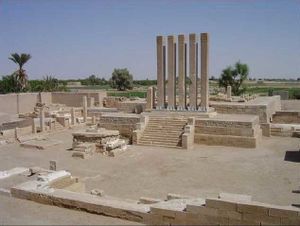
Recent archaeological discoveries in the Mahram Bilqis (Mahram Bilkees, "Temple of the Moon Deity") in Mareb, Yemen support the view that the Queen Sheba ruled over southern Arabia, with evidence suggesting the area to be the capital of the Kingdom of Sheba.
A team of researchers funded by the American Foundation for the Study of Man (AFSM) and led by جامعة كالگاري archaeology professor, Dr. Bill Glanzman, has been working to "unlock the secrets of a 3,000-year-old temple in Yemen." "We have an enormous job ahead of us," said Glanzman in 2007. "Our first task is to wrest the sanctuary from the desert sands, documenting our findings as we go. We're trying to determine how the temple was associated with the Queen of Sheba, how the sanctuary was used throughout history, and how it came to play such an important role in Arab folklore."[10]
ملكة سبأ في الثقافة الشعبية
باليه
- Ottorino Respighi, Belkis, regina di Saba (1930–1931)
أفلام
- The Queen of Sheba's Pearls (2004), starring Swedish actress Helena Bergström and Nathan Eby, who played the Princess of Sheba.
- The Queen of Sheba (1921), starring Betty Blythe
- Solomon and Sheba (1959), starring Yul Brynner and Gina Lollobrigida
- The Queen of Sheba Meets the Atom Man (1963), directed by Ron Rice
- Solomon and Sheba (1995), starring Halle Berry
- Solomon (1997), starring Ben Cross And Vivica A. Fox
أشعار
- "Poem for Flora" by Nikki Giovanni
- "Solomon to Sheba" by W.B. Yeats
- "The Queen of Sheba" by Kathleen Jamie
طالع أيضاً
| Queen of Sheba
]].الهامش
- ^ اوپرات شارل گونو
- ^ Hatshepsut, the Queen of Sheba, and Immanuel Velikovsky
- ^ Jones, David E., Women Warriors: A History, Brasseys, Inc.; (2000)
- ^ Gutenberg, David M. (2003). The Curse of Ham: Race and Slavery in Early Judaism, Christianity, and Islam. Princeton University Press.
{{cite book}}: Cite has empty unknown parameter:|coauthors=(help) - ^ Morgan, J.R. and Stoneman, Richard (1994). Greek Fiction: The Greek Novel in Context. Routledge. pp. p.117-118. ISBN 0415085071.
{{cite book}}:|pages=has extra text (help)CS1 maint: multiple names: authors list (link) - ^ Nubian Queens in the Nile Valley and Afro-Asiatic Cultural History - Carolyn Fluehr-Lobban, Professor of Anthropology, Museum of Fine Arts, Boston U.S.A, August 20-26, 1998
- ^ أ ب Byrd, Vickie, editor; Queen of Sheba: Legend and Reality, (Santa Ana, California: The Bowers Museum of Cultural Art, 2004), p. 17.
- ^ Murray, Stephen, The Portals: Access to Redemption, http://www.mcah.columbia.edu/Mcahweb/facade/body.html, webpage, accessed August 6, 2006.
- ^ Marlowe, Christopher; Doctor Faustus and other plays: Oxford World Classics, p. 155.
- ^ University of Calgary, http://www.ucalgary.ca/UofC/events/unicomm/NewsReleases/queen.htm, website accessed November 18, 2007
مواقع خارجية
المصادر الرئيسية
- Joseph, Antiquitates iudaicae viii.6.2
- Pliny the Elder, Naturalis historis vi.32.154
المصادر الثانوية
- Makeda, Queen of Sheba by Torrey Philemon.
- Queen of Sheba Temple restored (2000, BBC)
- The Queen Of Sheba by Michael Wood and the BBC.
- The Queen of Sheba, web directory with thumbnail galleries
- الموسوعة اليهودية وفيها معلومات عن القصص اليهودي والإسلامي عن ملكة سبأ
- "Queen of Sheba mystifies at the Bowers" — Gladys Rama's review of a museum exhibit for UC Irvine's 'New U' publication
بيبليوگرافيا
- Alessandro de Maigret. Arabia Felix, translated Rebecca Thompson. London: Stacey International, 2002. ISBN 1-900988-07-0
- Andrey Korotayev. Ancient Yemen. Oxford: Oxford University Press, 1995. ISBN 0-19-922237-1.
مواقع خارجية
- الرواية الاسلامية لقصة بلقيس

